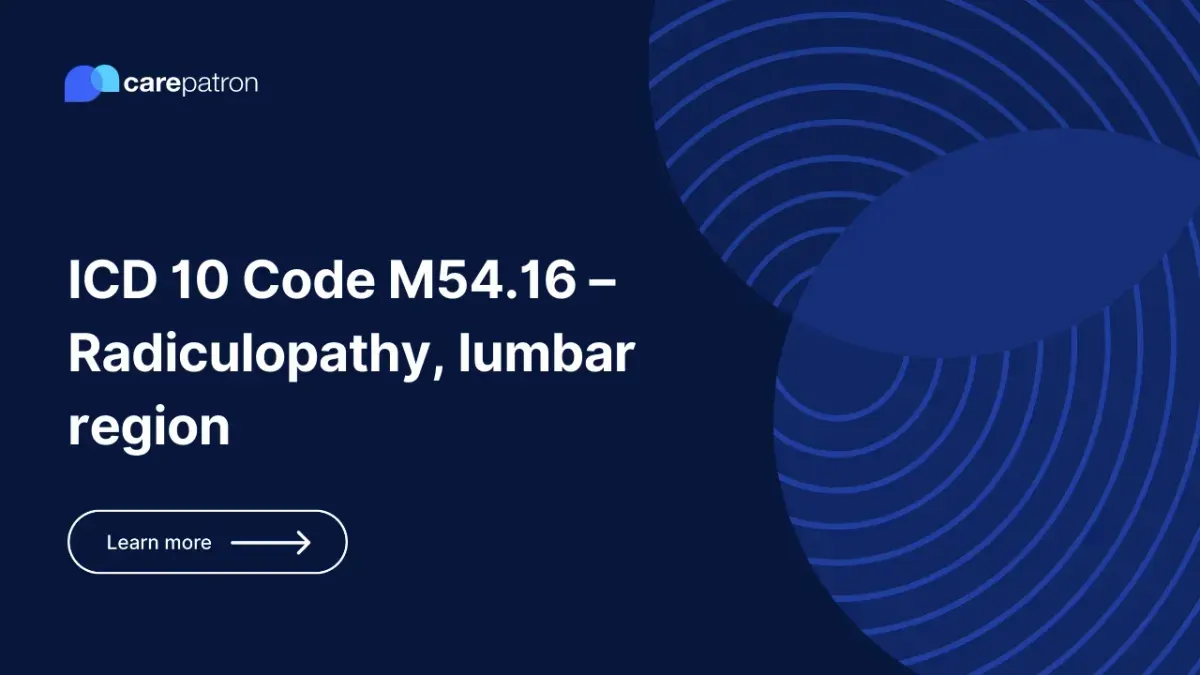
M54.16 – Radiculopathy, lumbar region
Learn about the M54.16 ICD-10-CM code for radiculopathy in the lumbar region through this guide.
Use Code
Commonly asked questions
Treatment options may include physical therapy, nonsteroidal anti-inflammatory drugs (NSAIDs), epidural steroid injections, chiropractic care, and surgical interventions in severe cases.
In some cases, if left untreated or if the underlying cause persists, radiculopathy can lead to long-term nerve damage and chronic pain. Early diagnosis and appropriate management are crucial to prevent potential complications.
Radiculopathy symptoms may improve in mild cases with conservative treatments, such as rest, physical therapy, and pain medications.
EHR and practice management software
Get started for free
*No credit card required
Free
$0/usd
Unlimited clients
Telehealth
1GB of storage
Client portal text
Automated billing and online payments
